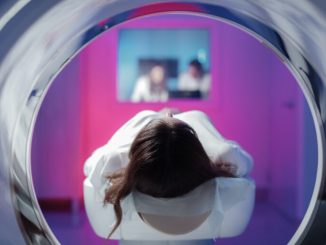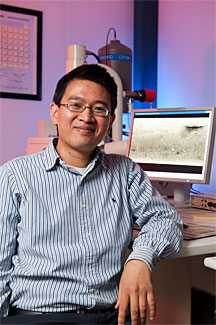
The new machine could help improve access to health technology, say scientists from the Paihau—Robinson Research Institute (RRI) at Te Herenga Waka—Victoria University of Wellington.
Researchers at the RRI developed and installed the magnet used in the portable scanner, which is now being trialed in a joint project with the University of Minnesota in the United States.
Ben Parkinson, a senior engineer at RRI, says the magnet’s small size is the key to making MRI scanners portable. Smaller scanners will also mean “a more positive patient experience,” he says.
“The obvious question was why has nobody built a scanner like this before? The answer was because, until now, there hasn’t been a way to produce clinical-quality images using the magnetic field from a magnet this small.”
Mr Parkinson says the Center for Magnetic Resonance Research at the University of Minnesota is renowned as a pioneer of magnetic resonance imaging. The center approached RRI to help develop the new, portable system.
“Researchers at the center needed to solve two of the biggest problems with standard MRI scanners: the size of the magnet they contain and the infrastructure needed to support them.
“This is technology we understand very well. We’ve been able to develop something complicated and sophisticated that actually works-there’s nothing like it in the world.”
Study principal investigator Professor Michael Garwood, from the University of Minnesota Medical School, says the magnet’s design could make MRI scanners transportable to populations and environments almost anywhere.
“Typically, the large size and weight of the scanners make it difficult to take them to remote or resource-limited areas. As a result, MRI is primarily available to the middle and upper classes in wealthy countries.
“But future portable scanners like ours may empower communities in remote, resource-limited settings to address health inequities, perform research leading to improved understanding of brain development and degeneration in diverse populations, and improve access to quality clinical care.”
Mr Parkinson says in New Zealand the portable scanner could be taken to remote areas such as on the west coast or the far north, where there is limited access to MRI.
“There are a few hurdles to jump over before this point though. At the moment, the portable scanner is still very much a piece of scientific equipment. The next step is for the research team at the University of Minnesota to get the MRI scanner achieving diagnostic quality images.”
The machine itself was designed in collaboration with researchers from Te Herenga Waka’s Faculty of Architecture and Design Innovation.
“One of the goals of the project was to improve patient experience. We decided early on to embed industrial designers in the project,” says Mr Parkinson. “The sucess of this collaboration led to the team winning the Community Choice Prize at the international Core77 Design Awards in 2020.”
Another big success for researchers has been the seamless collaboration between countries and universities, Mr Parkinson says.
“Developing a device that needs to work both mechanically and electromagnetically would be a complicated enough endeavour within your own institution, let alone internationally. But the team has been very successful and I am excited to continue our partnership.”
The project has received $20 million in grants from both the US National Institutes of Health and via Kiwinet. Of this, $3 million went to the RRI for the development of the magnet.
The team of institutions involved includes investigators from Te Herenga Waka—Victoria University of Wellington, University of Minnesota, Universidade de São Paulo, Harvard University, Yale University, and Columbia University.



